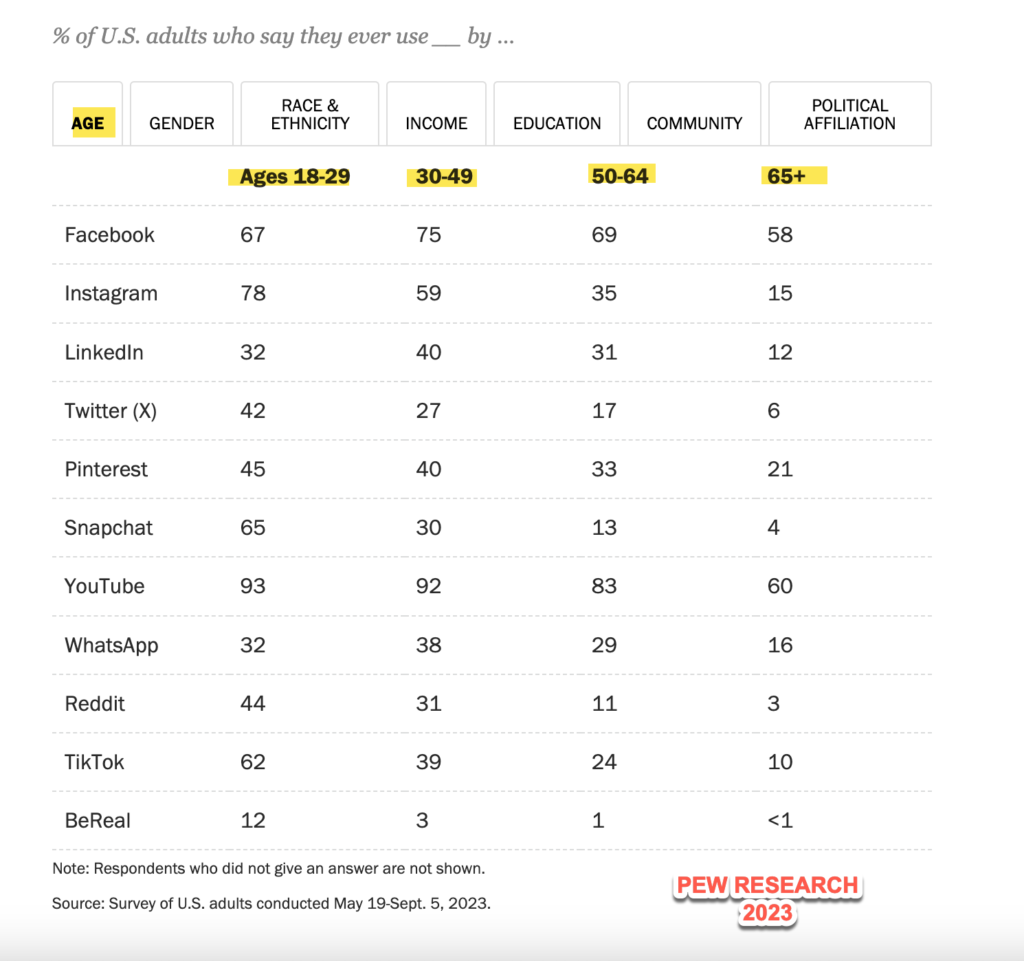
Snapchat has introduced a range of features, both functional and protective, aimed at enhancing user experience while ensuring safety for kids and teens. Here’s a breakdown of Snapchat’s features and how they are working towards protecting minors on the platform.
Snapchat offers several different features and understanding all of them can be difficult at times. We have broken down some of the most used features within the application for you.
Snapchat Terms and Meanings
Snaps are photos and videos that users can send to their friends. After they are viewed they will either instantly disappear or after a 24 hour period. This depends on the settings the user as selected within this field.
Chat is used like a text message. This will disappear after being read (unless saved by the user). The user can also send audio and video messages.
Stories is a 24-hour collection of Snaps that users can post for their friends or the public to see.
Spotlight is a public space for viral short videos, like TikTok. Users can view content based on their interests.
Lenses and Filters are Augmented Reality (AR) filters and effects users can add to their photos and videos.
Discover is a feature where users can find content from publishers, creators, and influencers.
Memories is a private archive where users can save Snaps and Stories for later viewing or sharing.
Snap Map is a feature that allows users to share their location with friends or view the location of friends who have shared their location on the map.
Streaks is a fun feature that tracks how many days in a row two users have been sending each other Snaps.
Bitmoji is where users can create personalized avatars (Bitmojis) to represent themselves in Snaps and chats.
Snapchat Features for Protecting Kids and Teens
Snapchat has taken steps to make the platform safer for younger users, particularly with features aimed at privacy, limiting exposure to inappropriate content, and enabling parental controls. Additionally, Snapchat recently rolled out a resource for educators, explaining what Snapchat is, Safety at Snap, and Educators Tools and Resources. Note, that while these new features and transparency within the Snapchat corporation are aimed at assisting in the protection of minors, there are still workarounds that teens may find accessible.
Age Verification
Snapchat requires users to enter their date of birth during account creation. If users are under 13, they are restricted from creating a standard account.
Note: Users who are utilizing this platform without the supervision of an adult can still create a date of birth that is false.
Privacy Settings for Teens (13-17)
Default Friend Settings: For users under 18, Snapchat defaults to allowing communication only from their accepted friends. Strangers cannot send messages, Snaps, or friend requests unless explicitly added as friends.
Limited Discovery: Snapchat curates and limits the content teens can access in the Discover section to avoid exposure to adult or inappropriate content.
Note: Users are still able to view “friend suggestions”. This means that if Bobby, a current friend of Sarah’s, is friends with John the drug dealer, John may pop up as a “friend suggestion” to Sarah. Sarah may feel safe adding a friend of Bobby’s since Snapchats culture is all about making friends and connections.
Snap Map Privacy
Ghost Mode: Users can hide their location from others by activating Ghost Mode. By default, users must manually opt-in to share their location.
Restricting Location Sharing: For users under 18, location-sharing features are restricted to only friends they have accepted, and public location sharing is discouraged.
Two-Factor Authentication
Snapchat offers two-factor authentication (2FA) to add an extra layer of security, helping to protect accounts from being hacked.
In-App Reporting Tools
Safety Center: Snapchat provides a dedicated safety center for users to access guidance on privacy settings and how to report abuse.
Reporting Content: Users can report inappropriate content, bullying, harassment, or suspicious accounts within the app. Snapchat’s moderation team reviews these reports.
Restricted Friend Suggestions
Snapchat does not show accounts of teens (13-17) in Quick Add to anyone unless they have mutual friends. This helps prevent strangers from discovering their profiles.
Parental Control Features (Family Center)
Family Center: Snapchat introduced Family Center, a set of tools for parents to monitor and guide their child’s usage without directly viewing their messages.
View Friends List: Parents can see who their child is friends with, allowing them to be aware of connections without invading their child’s privacy.
Report Harmful Activity: Parents can report accounts or concerns directly to Snapchat via the Family Center.
Content Moderation and Filtering
Snapchat uses machine learning and moderation tools to detect and remove inappropriate content, especially in public sections like Discover and Spotlight.
Age-appropriate Content: Snapchat curates content and ensures that minors do not have access to channels or content labeled as inappropriate for younger audiences.
Anti-Bullying Measures
Snapchat encourages positive interactions by allowing users to control who can contact them and limiting the ways they can be discovered by others.
Disappearing Messages: Since messages disappear after being read, this discourages the spread of harmful or inappropriate content.
Blocking and Reporting: Users can easily block, report, or remove someone from their friends list, and Snapchat investigates reports of harassment or bullying.
Time Management
While Snapchat does not offer built-in time limits, it encourages parents to use third-party parental control apps to manage screen time, ensuring teens do not spend excessive time on the app.
Safety Education
Snapchat partners with organizations such as ConnectSafely and the Family Online Safety Institute to educate teens, parents, and educators about digital well-being and online safety.
No Public Profiles for Teens
Snapchat restricts users under 18 from creating public profiles, helping protect their content from being viewed by strangers.
Snapchat has designed a range of features aimed at providing a safe environment for teens while offering privacy control and parental oversight tools. While it continues to evolve and improve, the platform emphasizes privacy and safety for younger users by default.
At E-Chatter we strive to not only educate Private Investigators on how to search through social media platforms, but also shed light on social media topics such as this to educate parents, grandparents, educators, and guardians. Visit our website for additional information on how we and assist you and your online search efforts now.






